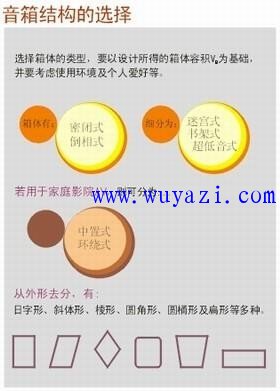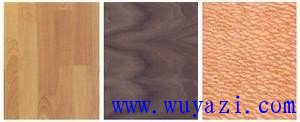1 Relationship between sound structure materials and playback Stainless Steel Industrial Pipe ShenZhen Haofa Metal Precision Parts Technology Co., Ltd. , https://www.haofametals.com
A pair of ideal speakers, except for the speaker diaphragm, should not vibrate with sound waves. On the contrary, it is mainly caused by the thickness and weight of the box. Therefore, the production of the speaker should take into account the volume and power of the speaker, the greater the air pressure in the chamber, the harder and thicker the board wall, especially the front and rear panels are prone to vibration, the thickness of the board is suitably thicker than Side panel.
The panel of the closed speaker is thicker than the inverted speaker. If it is a low speaker, its box is much heavier than the HI-FI cabinet board. Since the thick plate is smaller than the natural resonance of the board, it is best to use a box with a hard texture, a large weight, and a certain thickness.
Because the enclosure is not leaking, the cabinet is too thin to cause resonance. If a certain frequency excites the vibration of the box, the energy at this frequency will be largely consumed in the vibration damping of the board, and thus it is enough to generate a deep valley value, which seriously affects the sound quality. Only thickened box plates can have a significant effect on the box wall resonance and reduce the generation of standing waves.
From the empirical data of the production of the speaker, the relationship between the size of the speaker and the thickness of the box is as follows:
The speaker diameter of the speaker should be 16~18mm;
The speaker diameter is 15~20cm (6~8in).
The thickness of the speaker board should be 18~20mm;
The speaker diameter is 25~30cm (10~12in).
The speaker thickness should be 20~25mm;
The speaker diameter is 35.6~45.7 (14~18in).
The speaker board thickness should be 25~30mm.
If the original board is used and its texture is hard, the thickness of the box can be reduced by 10% to 15%.
2 Speaker structure selection No matter which box is selected, it is hoped that it should not be made into an equilateral square, at least to avoid the same length, width and depth. The box is preferably rectangular in shape to avoid standing waves at a certain frequency within the chamber.
High-fidelity HI-FI sound systems are generally placed in the living room. The living room area is mostly around 15m2. In such a hall, HI-FI speakers can be placed. Although the floor type can be used, the height should not exceed 1M, and the power should not be too large. If the sound system is rated at 100W, the available power to the speaker is insufficient. It is also impossible for the speaker to play the proper sound reproduction. Only by giving more than 70% of the power to the speaker can the true performance of the speaker be truly reflected.
If it is a small small hall, you should use a small HI-FI speaker or bookshelf speaker. The volume is moderate, the tone is beautiful, and the shape is elegant. The production of car speakers, most of which are designed according to the space behind the car, is more difficult.
3 Selection of box materials Small speakers are made of plastic. Generally, large and medium-sized speaker cabinets are made of wood. In the 1950s, the domestic speaker cabinets were mainly made of original wood or plywood, and their form was monotonous, and the system quality was not high. Since the fiberboard was put on the market in the mechanism, it basically replaced the original wood, and the quality of the cabinet thus produced was also continuously improved.
3.1 Selection of speaker panels 
The variety of wood quality is very different. The panels used to make the speakers should have a good fiber density, which gives them a strong ability to suppress vibration. At the same time, the board should be moisture-proof and not easily deformed. Currently widely used plates are mainly medium fiberboard and particleboard; followed by raw wood, such as ash, riverwood, rosewood, birch, walnut, maple and rosewood. High-end speakers, available in the fine wood of sandalwood. Choosing hard, fine-grained wood is also an excellent wood for making speakers.
High-grade raw wood generally has high fiber density, high hardness and low shrinkage. The wood needs to be evaporated and dried or naturally dried for 1-2 years or more before it can be used to make speakers. Only in this way can the speaker be easily deformed and cracked. The use of high-grade wood to make speakers, the cost is high, the use of narrow-faced original wood, you need to splicing, which will increase the difficulty of production, so the use of wood panels is rare.
The splint is a large-area flat panel of the mechanism board. Its large surface, easy to cut, easy to process, suitable for large and small speakers. However, since the sheet is adhesively laminated into a sheet, it is easily degummed, deformed, and even wormed.
The particle board is a plate made of wood chips that have been shaved and processed into granules of different thicknesses, which are bonded by mechanical heat. Particleboard is available in single or multiple layers. The wood chips inside the single-layer board are evenly distributed, with high hardness and smooth surface. The interior of the multi-layer board is arranged in layers according to the size of the wood chips. The surface particles are small, the density is large, the middle particles are large, and the density is small (or layered according to the density). Made by cross arrangement). Due to the large size of the particle board, the pressed sheet is loose, low in strength, afraid of moisture and easy to break. Its cross-section is rough and difficult to process flat. It is only suitable for making speakers that are not demanding, and it is a small speaker.
MDF is a high-tech new product that has risen in recent years. It is made of roots, branches, stems, etc. in the tree, processed into fine fibers, and then pressed into a variety of density boards (MDF) by mechanical heat. The inner material of the fiberboard is uniform and fine, with good toughness, moderate strength, moisture resistance, non-deformation, smooth surface, strong damping characteristics, thin cross-section and suitable for finishing. It is the fastest growing new type of wood-based panel in the world. It is the best material for making speakers.
The fiberboard is divided into medium density board (600kg/m3) and high density board (up to 90kg/m3 or more). High-density boards are more expensive and generally less expensive. The medium-density board is moderately priced and has excellent performance. It is the best choice for making medium and high-end speakers.
3.2 The box body of the box plate is mainly made of sheet metal, most of which are rectangular, also have a barrel shape or other special shapes. According to the structure of the box and its requirements, it is also possible to increase the compartment of the chamber or the ribs of the ribs.
Before cutting, draw the lines to be cut on the pre-selected plates according to the design size. If the original wood or veneer is used to make the speaker, pay attention to the color of the wood and the texture, and pay attention to the symmetry (per pair of speakers). If the wood texture of the panel on the panel is transverse, then the side panel should be in the same direction as the upper panel, so it looks similar to the log texture and is very elegant. If a fiberboard is used, it has no wood grain itself, and the cabinet is covered with veneer. The cutting materials can be based on reasonable and non-wasting principles.
3.3 Position and shape of the inverted pipe hole The opening of the pipe hole should be carried out according to a certain procedure, that is, the arrangement of the speaker mounting hole and the phase-inverting pipe hole on the panel and the position of the hole are first set.
Inverted tube hole position:
Most of the inverted tube holes are opened below the front barrier and also open on the back plate.
Inverted radiation is usually used as an empty horn for large speakers. Because the speaker has large caliber and high power, it is rarely installed on the front panel, otherwise the height of the speaker needs to be increased.
The shape of the inverted tube:
The inverted tube is in the shape of a circular hole, a rectangle, a flat shape, etc., but most of them are circular. This is because for the same inverted orifice position, the circumference of the circular hole is the smallest, so the radiation damping in the tube is the smallest, that is, the resonance frequency f0 is in the maximum sound pressure.
Inverted tube size:
The size of the inverted tube should be the original design value. If it has not passed the adjustment, it cannot be changed casually. Otherwise, it will affect the superposition of the inverted sound pressure and cause the frequency change.
3.4 Opening of the speaker mounting hole